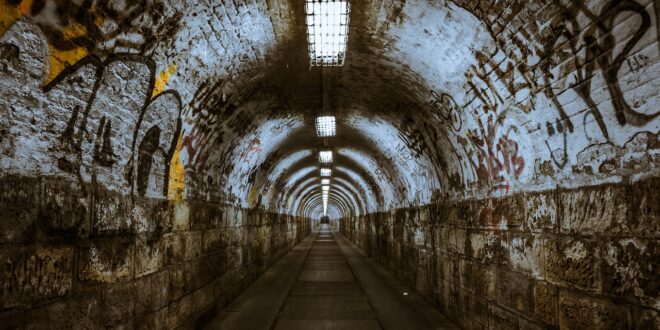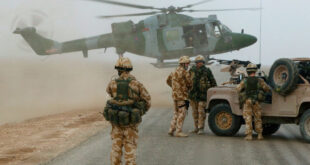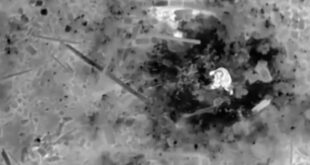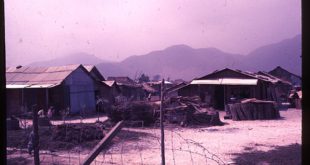by Susan Katz Keating
As the conflicts in Ukraine and Israel have brought urban combat into the forefront, U.S. defense officials are addressing what the complex realm of subterranean warfare will mean for American troops in future scenarios.
“Our adversaries have adapted their capabilities against our weaknesses by expanding their use of underground facilities,” Army officials wrote in a publication on subterranean operations. More than 10,000 of these “tactical tunnels” exist around the world, officials noted, and are growing larger and more complex.
READ MORE: Iran’s Underground Bunker for Fighter Jets
Western troops should expect to navigate and fight inside them in future conflict, one American Army officer told Soldier of Fortune.
“This is a growing face of war,” the soldier, Kyle, said while speaking from Europe via a secure communications app. “We gotta stay on top of it, so to speak.”
The Range Control Office at Fort Bragg* several years ago saw the need to “stay on top” of the underground, and built a subterranean training range to simulate combat in tunnels and tight spaces.
“In a stressful situation, you always revert to what you know,” Installation Range officer Wolf Amacker told an Army interviewer. “If you know your training and are well trained, then in stressful situations, you will revert to that training. That’s exactly what we want soldiers to do.”
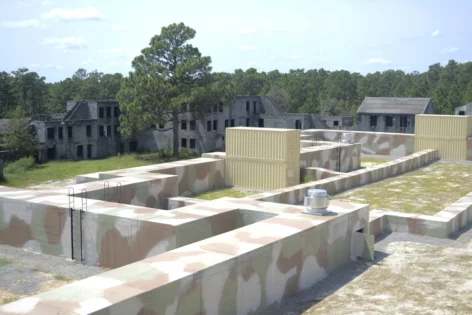
The facility trains soldiers to fight in situations that could send them underground, Amacker said.
“As you go through and clear an area, what you tend to find is a tapestry hanging on a wall,” he said. “You move that tapestry and there’s a hole in the wall and it leads somewhere. You move a bed and some planks and there is a hole in the floor that leads somewhere.”
The approach is new, but addresses an old situation, said Kyle, who studied military history before joining the Army.
Large defensive walls around cities have been used for thousands of years, he said. When those cities were invaded or came under siege, tunnel systems were often dug to permit escape, and to allow water or supplies to be delivered from beyond enemy lines. The tunnels brought corresponding counter measures, where saboteurs collapsed or blocked off the passages.
In the American Civil War, tunnels were used by fighters and civilians alike. During the 1863 siege of Vicksburg, civilians took shelter in caves they dug by hand.
In World War II, the Germans built rockets inside highly developed underground facilities. During the Cold War, the British used a tunnel complex at the Rock of Gibraltar that was begun in the late 1700s. Other examples include miles-long underground passageways used by Viet Cong guerrillas in Vietnam; and a tunnel beneath the border of North and South Korea, designed for a surprise attack on the south.
Tunnels more recently have been used for illicit activity not related to warfare. The U.S. Border Patrol for years has worked underground, tracking smugglers and migrants who travel via tunnels or storm drains.
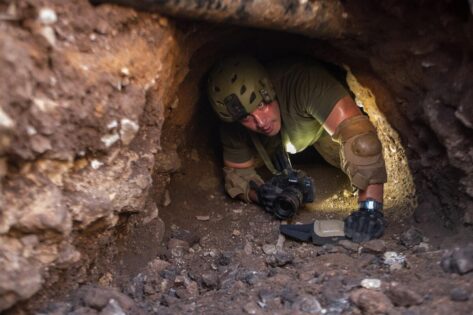
In years to come, the underground will feature more frequently during armed conflict, according to two modern war experts.
“With a trend toward greater urbanization, it will become even more difficult to avoid the subterranean environment,” wrote two retired officers, Maj. John Spencer and Col. Liam Collins, in an essay for the Association of the United States Army. It is “both folly and fantasy to believe soldiers will be able to avoid warfare’s reach into the underground,” they wrote.
Hence the Pentagon’s efforts to plan for those environments.
“Fortunately, there are efforts underway by U.S. military and supporting organizations to prepare for underground warfare,” Spencer and Collins wrote.
The Defense Advanced Research Projects Agency (DARPA) in 2018 launched a high-stakes competition, the Subterranean Challenge, pitting robotics teams against one another to seek solutions via an extensive, three-year quest that awarded millions of dollars in prize money.
The Army facility meanwhile aims to put soldiers through realistic underground scenarios. It includes mock enemy command posts to be captured and searched; 30-inch tall crawl spaces; and mock booby traps. It also replicates technological conditions.
“Radio communications don’t work inside this facility,” Amacker said. “So, if you’re in there and try to radio out for help, just like being 100 feet under the ground, it’s not going to work. You have to figure out now how to communicate back to the people on the surface.”
Underground hazards include fire, venomous insects, human waste, and the environment itself.
“Every action a friendly force takes underground may make the environment worse,” Army officials wrote in the publication about subterranean warfare. “Everything from weapons fire and explosions to the carbon dioxide from soldiers breathing can contribute to an increasingly dangerous environment.”
In such cases, officials warned, soldiers could be seriously injured or die before making contact with the enemy.
“If you go deep underground and there’s not good air flow you’ll die of suffocation,” Amacker said.
The training and education are key, according to Kyle.
“Without it, you could get caught in a type of warfare that’s so old you might not even think it’s being used today.”
Susan Katz Keating is the publisher and editor in chief at Soldier of Fortune.
*Soldier of Fortune’s policy is to refer to bases by the name they used during the time being referenced.
 Soldier of Fortune Magazine The Journal of Professional Adventurers
Soldier of Fortune Magazine The Journal of Professional Adventurers


